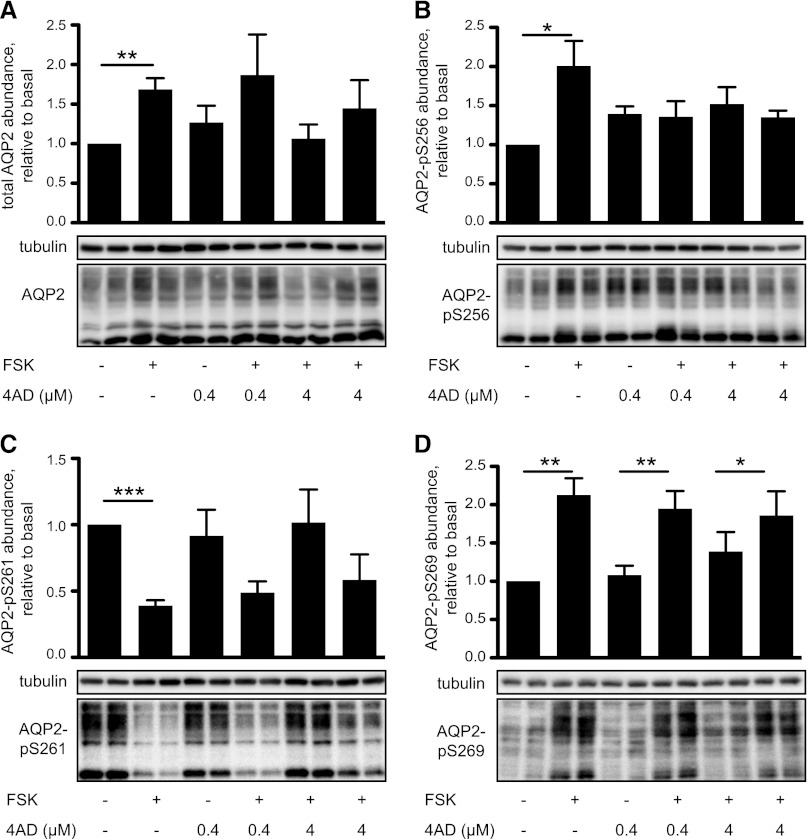Figure 7.
4AD inhibits the forskolin (FSK)-induced phosphorylation of AQP2 at S256 but does not affect cAMP-regulated phosphorylations at S261 and S269. IMCD cells were left untreated or were treated with forskolin (10 µM, 20 minutes), 4AD (0.4 or 4 µM, 30 minutes), or the indicated combinations of forskolin and 4AD. Lysates were prepared, proteins were separated by SDS-PAGE, and AQP2 was detected using specific antibodies (C17, Santa Cruz) (A). AQP2 phosphorylated at S256 (pS256-AQP2) (B) was detected with specific custom-made antibodies.25 pS261-AQP2 (C) and pS269 (D), and, as a loading control, α-tubulin were detected using commercially available antibodies. Representative blots from one of five or more independent experiments are shown. Upper panels. The signals emerging from the complex glycosylated form of AQP2 were quantified densitometrically. Statistically significant differences are indicated (mean ± SEM; *P<0.05; **P<0.01, ***P<0.001). compl, complex glycosylated APQ2; hm, high mannose form of AQP2; ng, nonglycosylated AQP2.

